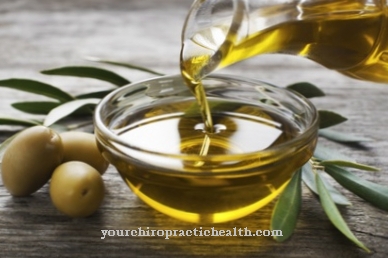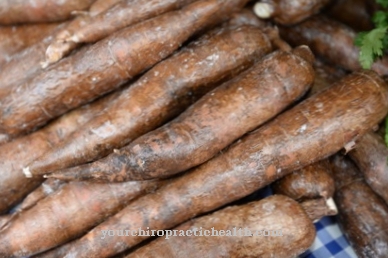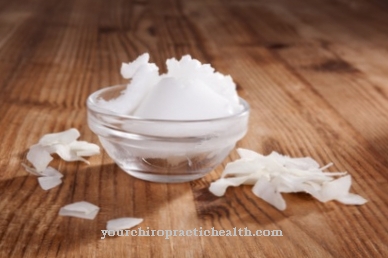chocolate is a pleasure for many people, but the demands on this cocoa-containing sweet are high: it should be aromatic, melt-in-the-mouth and have a certain sweetness.
What you should know about chocolate

The cocoa bean, which originated in Mexico and came to Europe in the 16th century, is used to make chocolate. At that time, chocolate was still served as a sweet drink and it was not until the 19th century that it was also made in the solid form as chocolate.
The Aztecs and Mayans prepared chocolate as a power drink 3000 years ago and in Europe it was initially offered in liquid form as a tonic. The first chocolate bar was made in England in 1847. They are now available in numerous variants that differ in taste and appearance. There are generally three types of chocolate available: milk chocolate, white chocolate, and dark (bitter) chocolate. The chocolates are defined according to their cocoa content (20 to 100 percent). This portion consists of the beans that are roasted and ground.
During grinding, the cocoa butter released combines with the other cell components of the bean and the cocoa mass is created. The cocoa content of dark chocolate must be at least 35 percent. A distinction is made between semi-bitter, bitter and extra-bitter. Sometimes the terms "noble bitter" or "fine-bitter" are used. In milk chocolate, the cocoa content is at least 25 percent and in white chocolate it must be at least 20 percent. As the proportion of cocoa increases, the proportion of sugar also automatically decreases. The cocoa content is usually stated on the packaging.
Importance to health
Chocolate is often referred to as a food for the nerves because it is good against stress. The reason for this is that it produces more serotonin in the body, which at the same time leads to inner satisfaction. The darker the chocolate, the more active ingredients it contains.
Dark chocolate or the cocoa it contains also helps with various common diseases, for example lowering inflammation and high blood pressure, regulating cholesterol levels and improving thrombosis and heart problems. In addition, thanks to the numerous antioxidants it contains, dark chocolate strengthens the immune system. Dark chocolate even helps if you are overweight, as cocoa improves the effectiveness of insulin and counteracts the insulin resistance that often occurs in overweight.
Ingredients & nutritional values
| Nutritional information | Amount per 100 grams (45-59% cocoa) |
| Calories 546 | Fat content 31 g |
| cholesterol 8 mg | sodium 24 mg |
| potassium 559 mg | carbohydrates 61 g |
| protein 4.9 g | Caffeine 43 mg |
In addition to water, the main components of chocolate are cocoa, vanilla and a special pepper. Cocoa butter is about 60 percent saturated fat. It contains only about 7 percent polyunsaturated fatty acids. Therefore it is very stable, so that it hardly goes rancid.
Most of the saturated fat is stearic and palmitic acids, which are harmless to health and which are excellent sources of energy for humans. Other ingredients in chocolate are in particular carbohydrates, fiber, minerals and a certain amount of fat and sugar. The sugar content is about 35 percent and the fat content about 13 percent. The ingredients in dark chocolate are significantly higher than in milk chocolate. Important ingredients in chocolate are, for example, iron, copper, phosphorus and potassium, as well as nutrients such as vitamin B. The flavonoids contained are attributed to the blood pressure-lowering effect of dark chocolate.
Intolerances & allergies
In some people, chocolate leads to skin blemishes and even acne. If the dark chocolate is consumed too much, the ingredients it contains can have harmful effects on health, which a milk drink would neutralize. In general, moderate consumption is recommended. Due to the higher sugar and fat content, this is especially true for milk chocolate, which often contains around 60 percent sugar, while the content of 80 percent chocolate is usually only 16 to 18 percent.
Shopping & kitchen tips
When storing chocolate, a few things should be observed so that it has a long shelf life and the quality is maintained. The chocolate is sensitive to moisture and must therefore be stored in a dry place. It also does not tolerate heat and temperature fluctuations so well.
The storage temperature should be 12 to 20 ° C and as constant as possible. In addition, chocolate is odor-sensitive, whereby the white specimens in particular can easily take on foreign smells and are therefore best stored in an odorless packaging airtight. There should be no strong-smelling foods such as cheese, fish, and meat nearby. Since chocolate is sensitive to oxidation, it must not lie in the light. The chocolate therefore prefers a cool place protected from light and air, but only develops its full aroma at room temperature.
When stored optimally, dark chocolate usually has a shelf life of at least two years, milk chocolate around 1.5 and white chocolate one year. If stored for a very long time, the quality of the candy will deteriorate. A good chocolate has a silky sheen, a crack can be heard when breaking through and the break edge is almost smooth. A chocolate that is of inferior quality is indicated by the fact that it is matt and has a whitish-gray film. This suggests storage that is too warm or storage at strongly fluctuating temperatures. The so-called fat bloom results from recrystallization of the fat.
If chocolate is stored in a very cold environment and then stored in a very warm environment, condensation often occurs on the chocolate. The sugar in the chocolate is dissolved in the moisture. When the water then evaporates again, the sugar remains in uneven, large crystals on the surface of the chocolate.
Preparation tips
The chocolate can not only be consumed directly, it can also be used in a variety of ways. It is suitable, for example, to cover pralines with it or to give sauces that special touch. For chocolate glazes, for example for pralines or cakes, the couverture and chocolate should be melted in a metal bowl over a water bath on a low heat. The bowl should be covered with cling film to prevent water splashes from getting into the chocolate.
If a little coconut oil is added, this prevents white spots in the chocolate coating. In addition, a beautiful shine is given. Desserts and cakes are also often made of chocolate. The popular chocolate mousse is very well known in numerous countries around the world. Regardless of whether cakes, tarts, desserts or savory dishes, there is something for every taste. Chocolate can be optimally grated, grated or sliced with a peeler for further processing. For this, however, it should be well chilled. If necessary, the chocolate or couverture can be briefly put in the refrigerator.

















.jpg)







.jpg)


